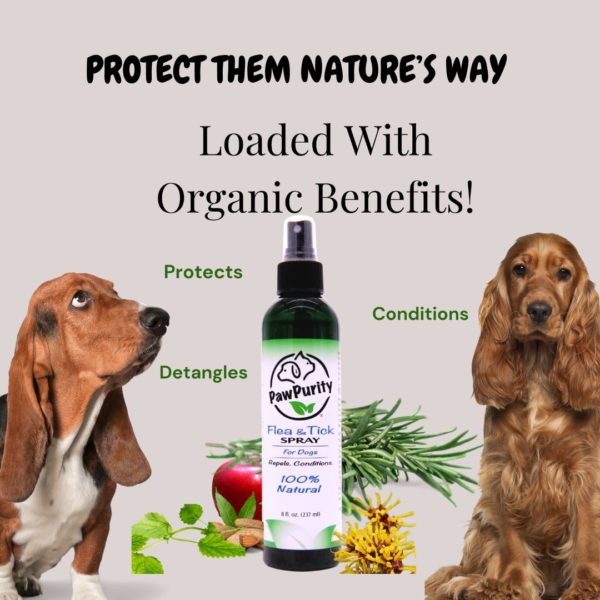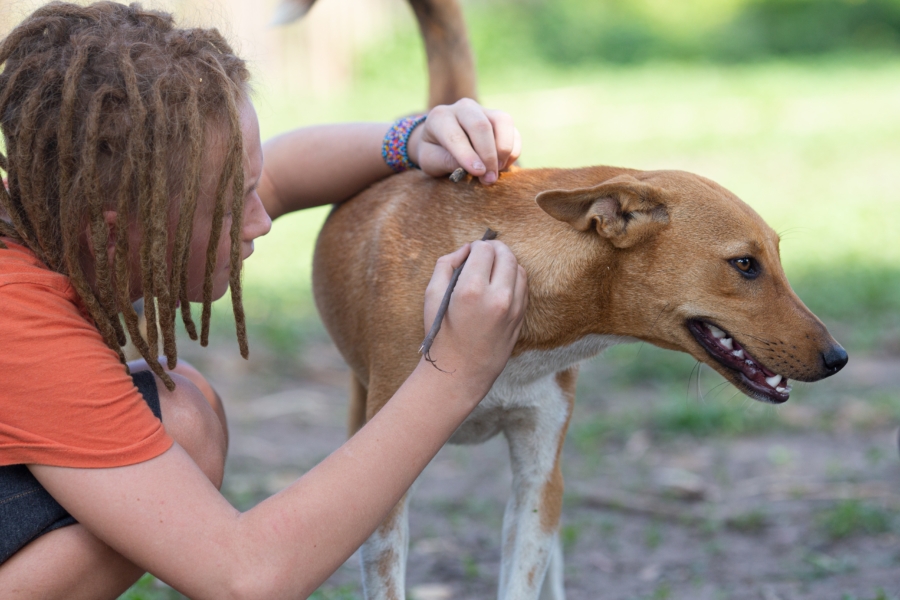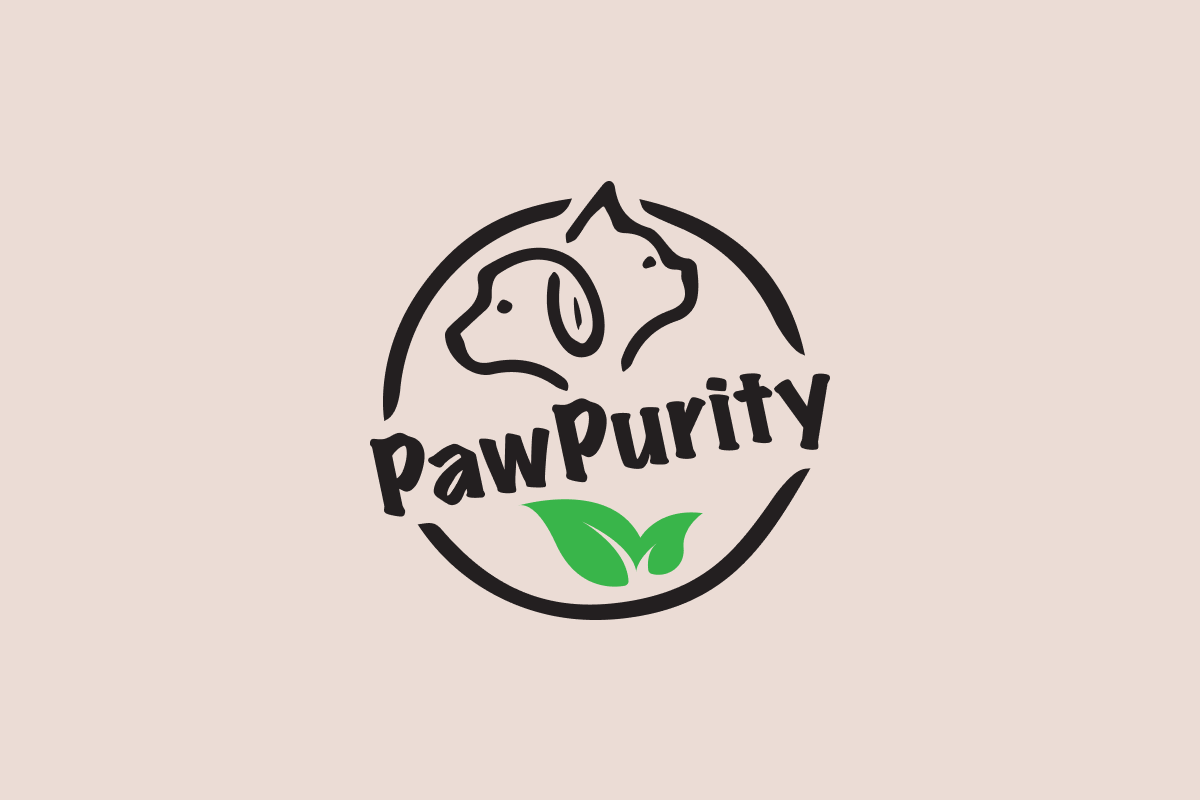Dog Tick Protection
Tick protection is essential during warmer temperatures. Tick bites can be dangerous to dogs and cats due to the potential transmission of diseases. They can carry and transmit dangerous pathogens such as Lyme disease, ehrlichiosis, anaplasmosis, and babesiosis. These diseases can cause a range of symptoms, including fever, lethargy, joint pain, loss of appetite, and more severe complications if left untreated. Protecting your pets from tick bites is crucial to their overall health and well-being. This means using everything in your tool box to keep the little buggers from latching onto your furbaby. Natural tick shampoos and sprays, lyme disease vaccinations and good housekeeping are essential. Here are some ideas you can follow to for ultimate tick protection.

- Regularly check your dog’s coat: Inspect your dog’s and cat’s fur and skin for any ticks after they have been outdoors, particularly in wooded or grassy areas.
- Keep your lawn well-maintained: Ticks often inhabit tall grasses and shrubs. By keeping your lawn trimmed and removing any debris, you can reduce the tick population in your immediate environment.
- Use a natural tick spray that doesn’t contain pesticides if you want to be completely safe with regards on what you put on your pet. PawPurity’s Natural Flea & Tick Spray is one of the products that fits into this category. This product can be sprayed directly onto your dog’s coat as a preventive measure. The natural ingredients in the spray act as a deterrent to ticks and fleas reducing the likelihood of them latching onto your dog.
- Limit outdoor exposure in tick-prone areas: If you live in an area known for a high tick population, try to restrict your dog’s outdoor activities to those areas. Stick to well-maintained paths and avoid tall grasses.

Although there are at least 15 species of ticks in North America, only a few of these species are likely to be encountered by your dog. They include American dog tick, lone star tick, deer or black-legged tick, and brown dog tick.
VCA Hospitals
What to do if you find a tick
- Spray the area with PawPurity Flea & Tick Spray to see if the tick unlatches on its own
- Use tweezers: Grasp the tick as close to the skin as possible, ensuring you have a firm grip.
- Pull gently but firmly: Slowly and steadily pull the tick straight out without twisting or jerking it. Be careful not to crush the tick’s body.
- Clean the area: Use an antiseptic to clean the bite area on your dog’s skin.
- Dispose of the tick: Place the tick in a container of rubbing alcohol to kill it, or flush it down the toilet.
What does a tick bite look like?
Tick bites can vary in appearance. Initially, the bite may appear as a small red bump, similar to a mosquito bite. As time progresses, it may develop into a red, inflamed area. Some tick bites may also create a bull’s-eye pattern with a central red spot surrounded by a clear area and an outer red ring. However, it’s important to note that tick bites can differ in appearance and may not always have a distinct pattern.
Flea and Tick Prevention by PawPurity
- Effectiveness: The PawPurity® Flea & Tick Shampoo and Spray have been specifically designed to repel and kill ticks and fleas effectively. Their ingredients act as a barrier to protect your pets from infestations.
- Natural ingredients: PawPurity® products are formulated with natural ingredients that are safe for pets, making them a preferable choice for pet owners who want to avoid harsh chemicals
- Convenient to use: The shampoo and spray are easy to apply and integrate into your pet’s grooming routine. They provide a convenient solution for maintaining your pet’s cleanliness and protecting them from ticks and fleas.
- Trusted brand: PawPurity® is a reputable brand known for producing high-quality pet care products. The company’s dedication to natural and safe ingredients, coupled with positive customer reviews, makes them a reliable choice for flea and tick protection.
Remember, while PawPurity’s tick prevention products can help to prevent bites, it’s essential to follow additional preventive measures and regularly check your pets for ticks, especially if they spend time in tick-prone areas. We all want to keep our fur babies safe and happy. During the warmer months, tick prevention is key.















